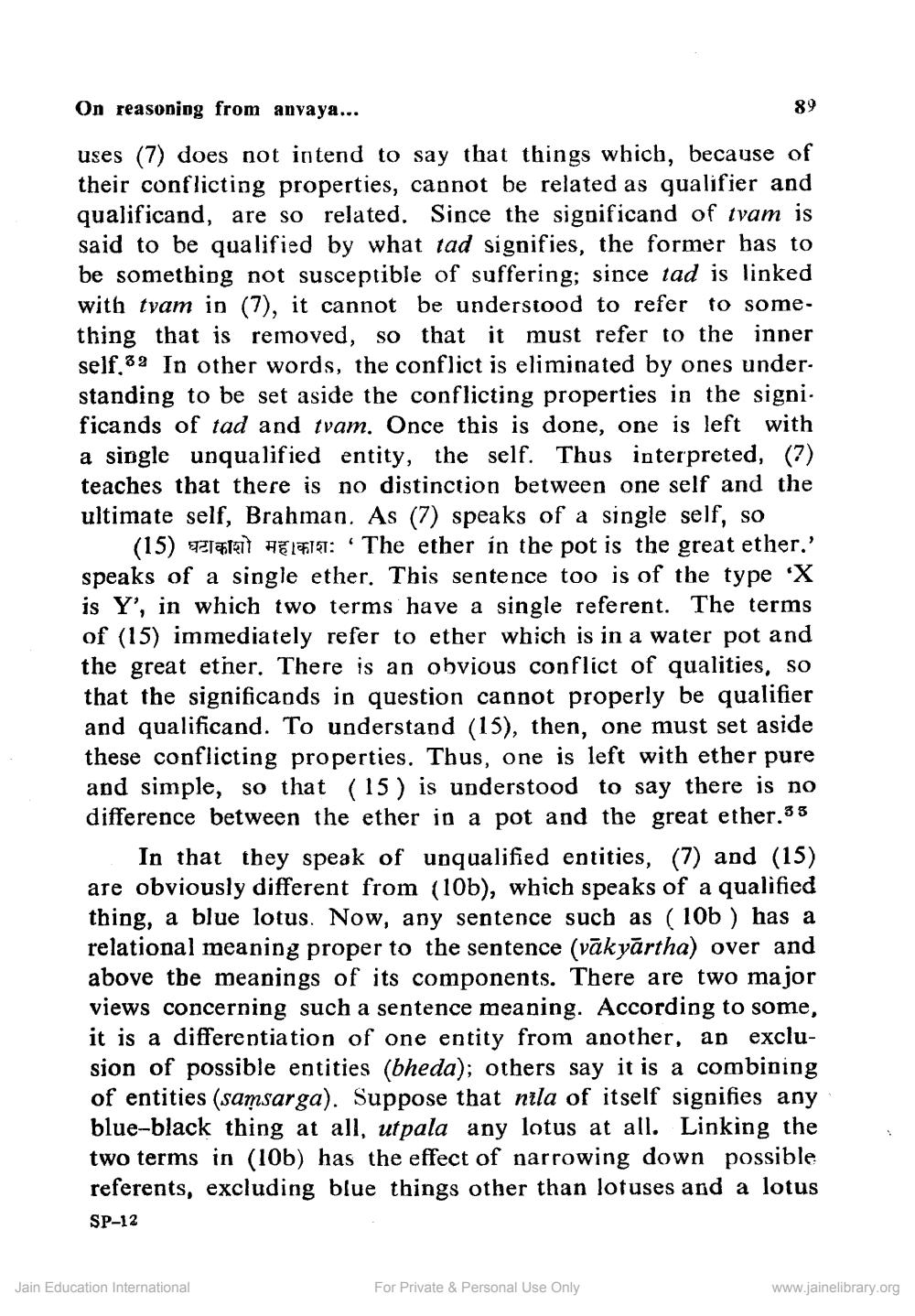________________
On reasoning from anvaya...
89
uses (7) does not intend to say that things which, because of their conflicting properties, cannot be related as qualifier and qualificand, are so related. Since the significand of tvam is said to be qualified by what tad signifies, the former has to be something not susceptible of suffering; since tad is linked with tvam in (7), it cannot be understood to refer to something that is removed, so that it must refer to the inner self.32 In other words, the conflict is eliminated by ones understanding to be set aside the conflicting properties in the signi. ficands of tad and tvam. Once this is done, one is left with a single unqualified entity, the self. Thus interpreted, (7) teaches that there is no distinction between one self and the ultimate self, Brahman. As (7) speaks of a single self, so
(15) 22131217 19157: The ether in the pot is the great ether.' speaks of a single ether. This sentence too is of the type 'X is Y', in which two terms have a single referent. The terms of (15) immediately refer to ether which is in a water pot and the great ether. There is an obvious conflict of qualities, so that the significands in question cannot properly be qualifier and qualificand. To understand (15), then, one must set aside these conflicting properties. Thus, one is left with ether pure and simple, so that (15) is understood to say there is no difference between the ether in a pot and the great ether.33
In that they speak of unqualified entities, (7) and (15) are obviously different from (106), which speaks of a qualified thing, a blue lotus. Now, any sentence such as ( 106 ) has a relational meaning proper to the sentence (vākyārtha) over and above the meanings of its components. There are two major views concerning such a sentence meaning. According to some, it is a differentiation of one entity from another, an exclusion of possible entities (bheda); others say it is a combining of entities (samsarga). Suppose that nila of itself signifies any blue-black thing at all, utpala any lotus at all. Linking the two terms in (106) has the effect of narrowing down possible referents, excluding blue things other than lotuses and a lotus SP-12
Jain Education International
For Private & Personal Use Only
www.jainelibrary.org




